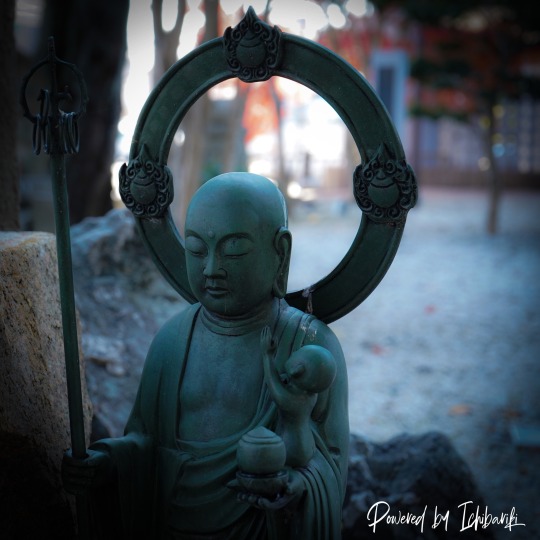#Jizō Bosatsu
Photo
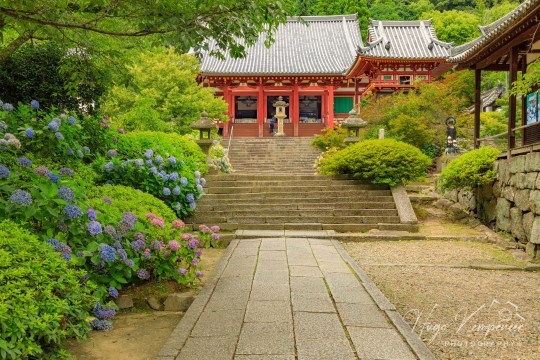
Yata-dera in Yamato Kōriyama, Nara-Prefecture, is famous for its many beautiful petals of Hydrangea. There are some 60 varieties and 10.000 plants.
#Ajisai#Emperor Tenmu#Japan#Jizō Bosatsu#Nara#Philipp Franz von Siebold#Yatadera#hydrangea#地蔵菩薩#天武天皇#矢田寺#紫陽花
20 notes
·
View notes
Text
The Etymology of the Four Yuus in Twisted Wonderland
For a brief introduction, there are different kinds of Yuus/Player for every media of TWST: Game Yuu, Novel Yuu (Yuuya Kuroki), Heartslabyul Manga Yuu (Yuuken Enma), and the most recent one, Savanaclaw Manga Yuu (Yuuka Hirasaka).
There's a different name for each Yuu in every adaptation of the game. The origin behind each names is quite interesting, so I wanted to share my thoughts on it.
I'm coincidentally a bit knowledgeable about the meaning behind each of their names, however, I am NOT Japanese (I'm SE Asian), so there might be wrong information, and if you find any, please feel free to correct me!
Game Yuu (ユウ)
Unlike the other Yuus whose names are written in Kanji, Game Yuu has their name written in Katakana as ユウ. Katakana is primarily used for transcription of words from foreign languages, but they can also be used as an emphasis on other Japanese words; in this case, Game Yuu's name is used in Katakana to signify them being from another world.
However, it's noted that Game Yuu's name is used as a play on the word “You” as seen in the end of Scarabia Book 4 where they reply with “I am Yuu” (if you have your name set as ユウ) when Mickey Mouse asked for their name.
Game Yuu's name doesn't need That much of deeper analysis explanation since it's meant to be a placeholder of the name us players decide.
Tldr; Yuu's name is written in Katakana (ユウ) instead of Kanji because it's supposed to signify how they're from another world, or simply, a foreigner.
Heartslabyul Manga Yuuken Enma (円満 雄剣)
If you aren't updated with the Heartslabyul Manga, Yuuken was a second year student and the vice captain of his school's kendo club before he was transported to Twisted Wonderland.
He has a very determined, righteous, and open-minded personality. Yuuken treats everyone with respect, as seen in the manga where he defends Riddle from getting hit by eggs even after Riddle just defeated Ace and Deuce in a duel. Yuuken is also strong in terms of physical strength, which is something that Game Yuu doesn't have (lol).
Starting off with his given name Yuuken, it contains the kanji 雄 which means “male or hero”, and the kanji 剣 which means “sword”. For me, this is like a reference to Yuuken's strong personality and determination for justice.
Meanwhile, his surname Enma 円満 comes from the Japanese name of Yama, who is the master of Hell, according to Buddhism and Hinduism. He's considered as a deity who has the authority to judge the crimes committed by those who once lived, and is commonly associated with righteousness. This one is a bit more tricky, so I'll start my in-depth explanation:
The references above are from Shintō or Shintoism, an ancient religion in Japan that is still practiced by more than millions until this date. Shintō is prevalent in Japanese culture, and you can see it referenced in several films, novels, animes, and games, like Twisted Wonderland. It's common in Japanese folklore that every demonic figure has a honji, or “true form”, and as for the Great King Enma, his honji is Jizō Bosatsu, who is the protector of children, travelers, and guards of the underworld.
Although the Great King Enma might seem terrifying and intimidating, he is compassionate, and genuinely wishes to save the souls from punishment, which is why there are several tests given to the souls of the dead to help them avoid going to hell.
((You might have noticed how Yuuken's personality is a bit similar to the Great King Enma..))
And now if we try to analyze the meaning of Yuuken's name, he is more or less like a powerful protector. Both of his names are similar to each other in terms of their meaning: righteousness (because of the word “sword” and with the Great King Enma being associated with “righteousness”).
Tldr; Yuuken's name is a reference to Shintō, which is why he always has the courage to do or stand up for the right thing during the entirety of the Heartslabyul Manga.
Savanaclaw Manga Yuuka Hirasaka (比良坂 悠河)
Savanaclaw Manga just recently started, so the only information we Know about Yuuka is that she's 17 years old, and was a judo master before she got isekai-ed. However, she is currently shown to have an easy-going, caring, and responsible personality.
Her given name Yuuka is a combination of the kanji 悠 which means “to help someone” and the kanji 河 which is “river”. I'd like to think that her given name symbolizes how she could be a bridge to help others.
Moving on to her surname, we are greeted with yet another reference to Shintō. 比良坂 is a reference to the Yomotsu Hirasaka which is, in Japanese mythology, a slope or boundary between the living world and the world where the dead live (Yomi); basically, the pathway to the underworld. There's a whole story to this, so another in-depth explanation is on your way:
The goddess Izanami died after giving birth to the god of fire (Kagutsuchi). The male god Izanagi is devastated by the loss of his wife, so he decides to travel to the Underworld (Yomi) in order to bring her back, which is where he travels through the Yomotsu Hirasaka to reach the Underworld. ((The story goes on, but it's not related about this anymore, however, you can just search “Yomotsu Hirasaka” online to find several stories about the whole story!))
And the use of Hirasaka as a name for the MC is quite headache inducing if we took it into a lore perspective where Game Yuu is connected to Mickey Mouse, who is presumably from another world, through the mirror.
((also can i just add how i Love the references to Shintō.... it's such a neat detail especially if u know that ancient Japanese used to believe that mirrors would suck the spirits of humans and connect our world to the spiritual world which is very fitting in terms of mickey mouse lore. it's like the dreams that Game Yuu sees through the mirrors is a reference to thsi))
Anyway, there's a common pattern for both of the names of the Manga Yuus to be similar to each other. If we take the “river” 河 in Yuuka's name as a symbolism, then it would be something like “path/flow of life” which is similar to the meaning of her surname, the path to the underworld.
Tldr; Yuuka's name is another reference to Shintō, or Japanese mythology. Her name could mean something like “a path to help others”, but we have yet to explore than in Savanaclaw manga.
Novel Yuuya Kuroki (黒木 優也)
From what I've seen so far, Yuuya has an extremely different personality from the rest of the Yuus (and honestly the most realistic one imo LMAO).
Contrary to how the other Yuus reacted after being isekai-ed, Yuuya immediately had a breakdown due to the change in environment. He's not too confident and is frequently anxious due to his past. He also dislikes confrontation. More information about Yuuya is found here.
We've finally arrived at our last Yuu, Yuuya Kuroki. No, there are no references to Shintō this time lol. Maybe a just bit I guess.
His given name consists of the kanji 優 which means “gentleness” and the kanji 也 which is used as “to be”, so Yuuya's name basically means “to be gentle”, which he is.
Kuroki is just a combination of the kanji 黒 which is “black” and 木 which means “tree”, but it could also mean “unbarked lumber”. I'm sure they're trying to reference something after all the Shintō references to the past Yuus, but I am Not sure what they are trying to reference. Lol.
However, trees are symbolic in Shintō as they are said that spirits inhabit trees that are of hundred years. They also connect the world of gods (kami) to the earth, and people.
Meanwhile, I'm not too sure what “black” 黒 could be a reference to. I've only thought of how tattoos painted in black where used as a protection from evil during ancient Japanese times, however, it's rarely seen like that as of today.
Tldr; We have yet to know more about Yuuya, but currently, he is seen to embody gentleness.
I think. that is all for today. I'd love to hear everyone's thoughts about this, please feel free to tell me!!!! And pls tell me if i ever said something incorrect because i do not want to spread misinformation ;;
I enjoy how every Yuu is somewhat related to the world building lore of twst so i could not resist talking about this.
102 notes
·
View notes
Text


Yakushi Nyorai triad, 17th century-18th century
Edo (Tokugawa) period, Japan
Hanging scroll, ink, colour and gold on silk
89.1 x 44.2 cm; 160.0 x 64.0 cm scroll
Yakushi (sansk. Bhaisajyaguru) is the name of the Buddha associated with healing. According to the 'Yakushikyō' ('Sutra of the Master of Healing'), Yakushi made 12 vows, two of which specifically dealt with physical healing, when he was still a Bodhisattva. Upon fulfilment of these vows, he became the Buddha of the realm known as 'Jōruri' (sansk. Vaiduryanirbha-sa) or 'Pure Lapis Lazuli' in the eastern quarter. The Yakushi cult started in the late 7th century in Japan, whereby the followers were among the imperial household and court nobility rather than the common populace. From the Muromachi period onwards, his healing functions were taken over by the increasingly popular Jizō Bosatsu. Yakushi, however, has continued into the present day to figure among the 13 Buddhas, presiding over the important memorial service on the 49th day after a person’s death.
Although not specified in the sutras, Yakushi Nyorai is often depicted with a jar containing medicine in his left hand, while his right hand is raised, palm out, showing the gesture of 'bestowing fearlessness' ('semuiin'). He is accompanied by Nikkō Bosatsu (Bodhisattva of the Sunlight) on his left and Gekkō Bosatsu (Bodhisattva of the Moonlight) to his right.
Asian Art Department, AGNSW, August 2008.
Collection of the Art Gallery of New South Wales
#buddhism#Medicine Buddha#Bhaisajyaguru#Mahayana#Suryaprabha#Candraprabha#bodhisattva#figure#painting#Yakushi#Jizo#ksitigarbha#Vaiduryanirbhasa#religion#Japanese#cultural amalgam#art#art history#art gallery of new south wales#cosmology#sun#moon
74 notes
·
View notes
Photo
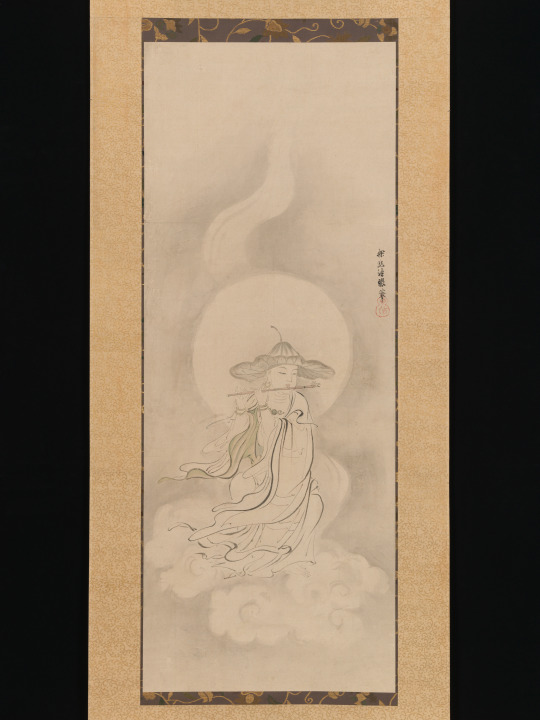
Jizō Bosatsu Playing a Flute. mid- 17th century. Credit line: Mary Griggs Burke Collection, Gift of the Mary and Jackson Burke Foundation, 2015 https://www.metmuseum.org/art/collection/search/53010
#aesthetic#art#abstract art#art museum#art history#The Metropolitan Museum of Art#museum#museum photography#museum aesthetic#dark academia
2 notes
·
View notes
Text
updates !
threads—nothing has been dropped, but i have noticed that i’ve lost some threads bc they’re not on my tracker, so i apologize for those delays. threads that start from memes always slide past me for some reason. i’ll find them, track, and reply.
roster—i’ve decided my villain will be enma daiō aka the japanese god of jigoku [equivalent of hades or lucifer] and tsurya’s personal tormentor (read: cheerleader aha). he will also go by yama and his true name, jizō bosatsu. is he actually a villain? depends on who you ask. but he’ll have a historical and a modern verse, so he’ll be able to fit in any muse’s timeline. he will also be yaketsu’s bestie and a frequent visitor of kagura’s lounge. c:
#{ ooc } — updates & things.#/ i just realized i have so many mythic and religious charas on this blog#/ i'll add a tw in my pinned#/ i just think buddhism and hinduism have the most fascinating deities#/ i also wanna get into yoruba deities#/ push my dark-skinned agenda ASDKLASD
6 notes
·
View notes
Photo
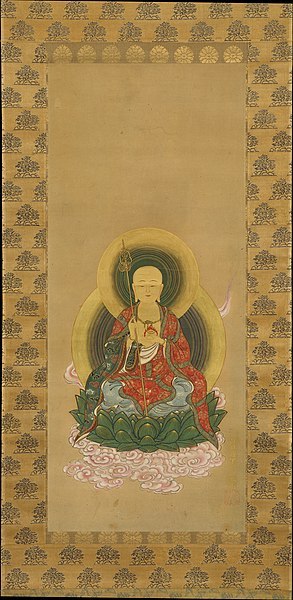
Masterpieces of Japan@JapanTraCul·
Jizō Bosatsu by Hanabusa Itchō, 1667-1698
15 notes
·
View notes
Text

What’s fascinating is that the statue Shinigami is gazing up towards, Jizō Bosatsu… when he’s not depicted like he is above, he’s depicted as:
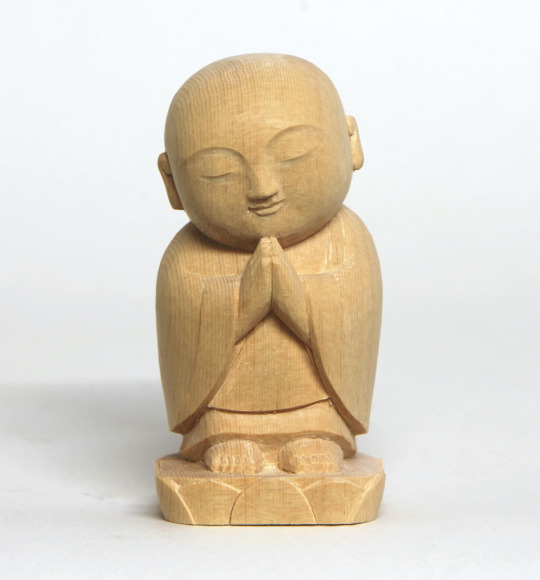
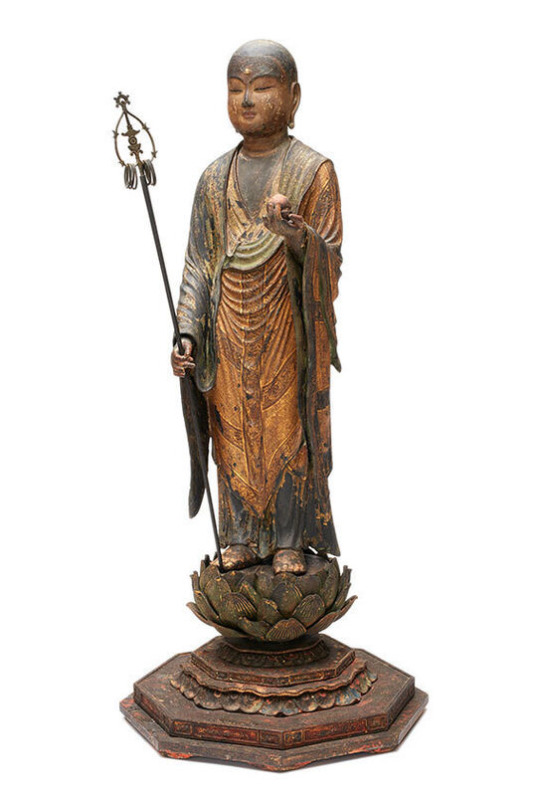
That weapon looking familiar at all?
#the amount of times kou has been compared to jizo#or kou does something that makes his peers think of jizo#pls look into jizo and ur brain will explode
16 notes
·
View notes
Video
Jizō Bosatsu par Athèna
Via Flickr :
Jizō Bosatsu (1202, Metropolitan Museum of Art, New York)
0 notes
Photo

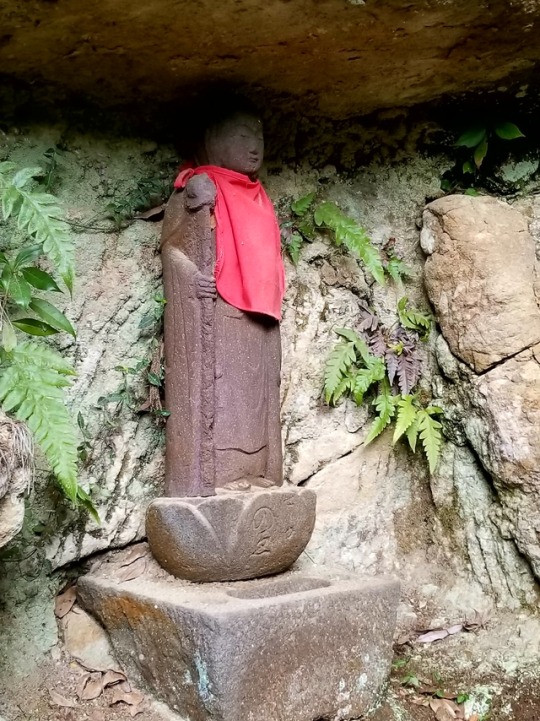

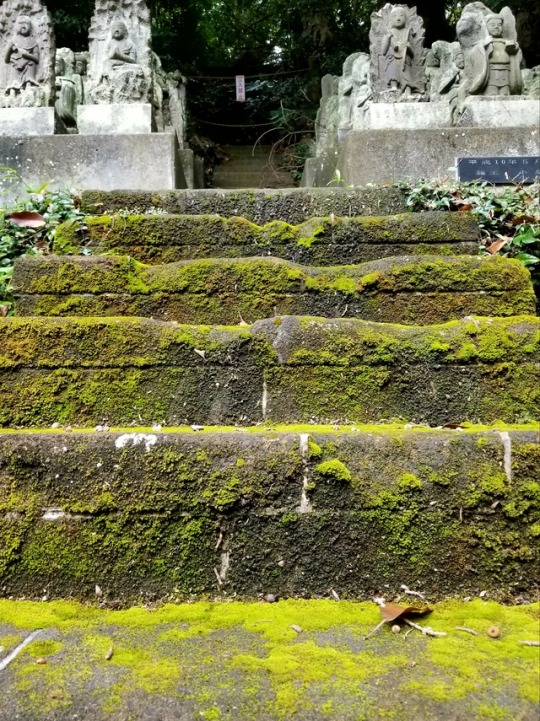
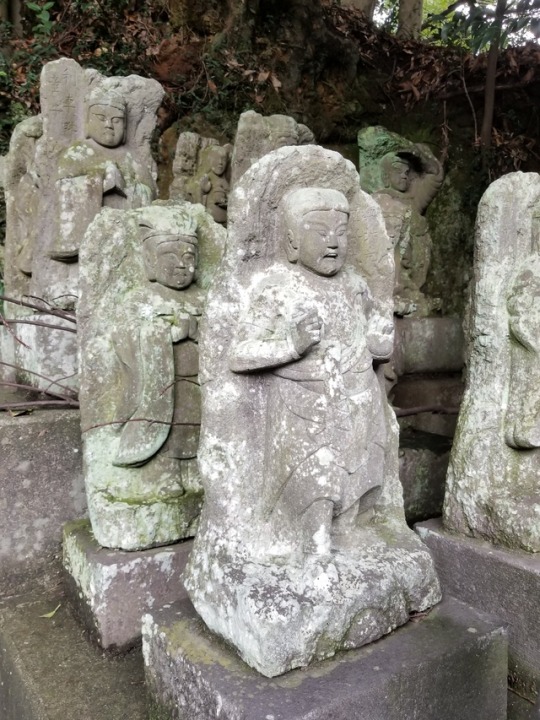
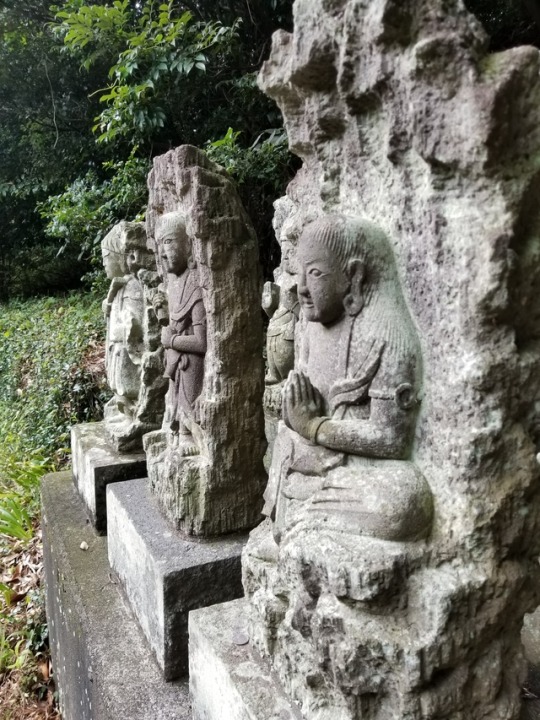
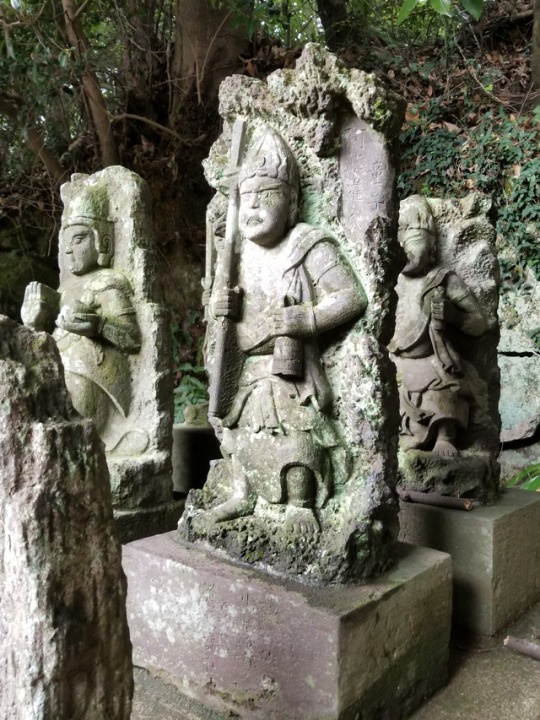
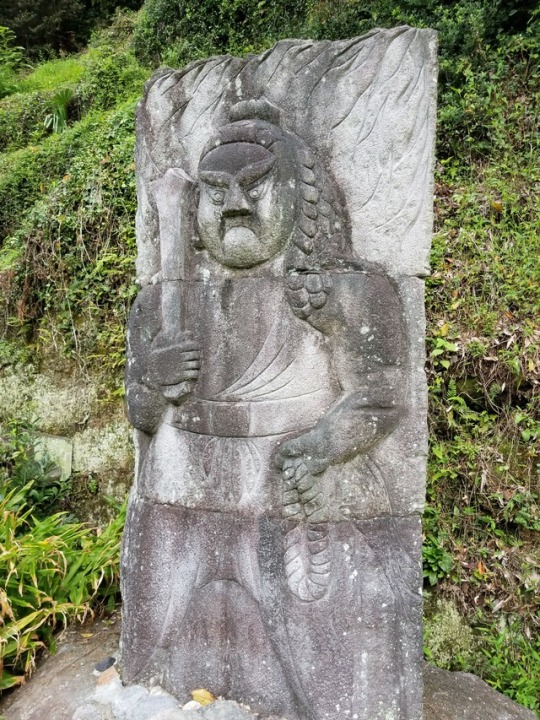
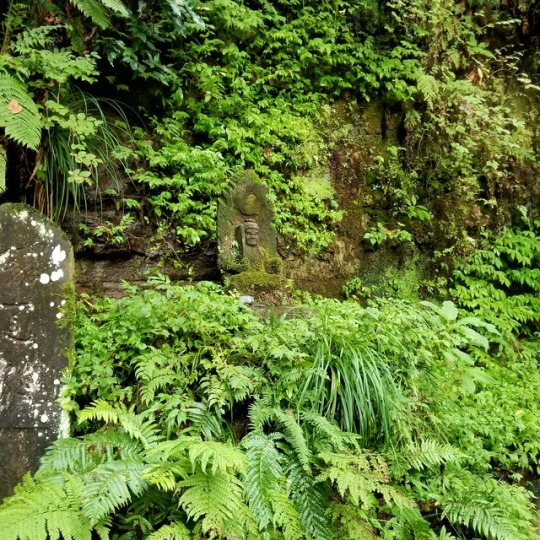
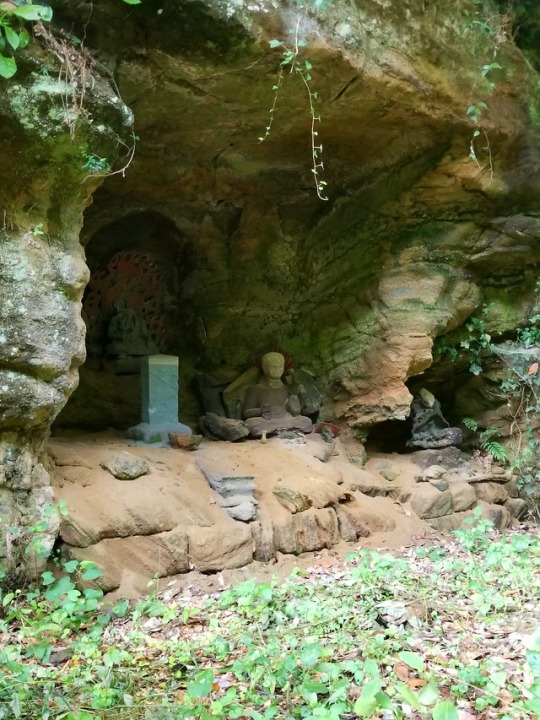
Shōmyō-ji (称名寺) is a temple in Kamakura about an hour and change of a trip from where I’m staying. I stumbled upon it quite by accident, as I was actually intending to visit a different temple of the same name in Yokohama last Sunday. As it happened, I plotted the course to this temple into Google maps without checking to verify whether I was on the right track, only realizing my error en route. I’m glad that this is how things came to pass, though, since I had a fun visit.
Shōmyō-ji stands in a wooded area about a 45 minute walk away from Ofuna Station (I walked back to the station from the temple because I didn’t have bus change, but you can also bus it from Ofuna). Throughout the temple complex are several images of, among other beings, Jizō Bosatsu (a bodhisattva; Sk: Ksitigarbha) and Fudō Myōō (a wisdom king/bright king; Sk: vidyaraja). There’s also an icon of Dainichi Nyorai (Mahavairocana), one of the cosmic Five Great Buddhas. Dainichi Nyorai reigns over the cardinal direction of the center.
I’ve been really busy and thus haven’t had too much time to follow up on the history of this temple yet, but I wouldn’t be surprised if it is a Shingon Buddhist temple.
When one visits this temple, they will see a map by the entrance showing two possible pedestrian routes, but one of them is closed off for now. The other leads to a long stairway to an enclosure that houses 36 Dōji and beyond them, the Dainichi Nyorai image. The statue stands past the area where visitors may walk, so I don’t have any good photos of it, but the fourth through seventh photos show the array of Dōji that stand before him.
Going back down to the base of the staircase, if one turns right, there is a cemetery and past that, a waterfall leading into a stream. There are several images of Fudō Myōō in that area (pictured in the last two photos), including a grouping enclosed in a caved area. It was a truly beautiful space - I wish my photos did it justice.
I was also excited that people who were visiting the temple spoke to me. Because this temple is not a high profile, famous place (to the best of my understanding), it is probably less common for foreigners to visit. They approached me to ask where I’m from, how I got there, why I decided to visit, etc., and were generally very nice to me, even though I was not on top of my game in terms of my speaking skills.
All in all it was a really great experience, and one of the few times when Google maps’ famed incompetence in Japan yielded positive results.
2 notes
·
View notes
Photo
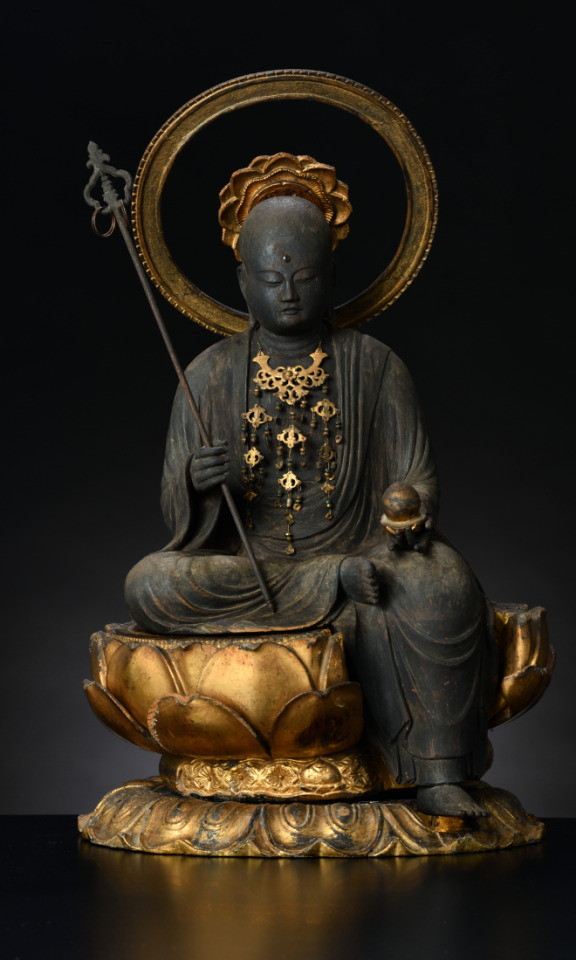
A WOOD FIGURE OF THE JIZO BOSATSU(BODHISATTAVA JIZŌ)
14th century, Japan.
831 notes
·
View notes
Photo

Yata-dera in Yamato Kōriyama, Nara-Prefecture, is famous for its many beautiful petals of Hydrangea. There are some 60 varieties and 10.000 plants.
#Ajisai#Emperor Tenmu#Japan#Jizō Bosatsu#Nara#Philipp Franz von Siebold#Yatadera#hydrangea#地蔵菩薩#天武天皇#矢田寺#紫陽花
22 notes
·
View notes
Note
sorry I am asking you because you answered a jjk ask but acc to the new ch what did yuji mean by when he said that yes he's quilty of shibuya incident?esp the (redacted) I would appreciate your ans. thanks!
BIG IF VAGUE JJK MANGA SPOILERS
.
.
.
I’d say take a look at Yuuji’s post-incident reactions/behavior, especially the way he speaks about it in during and after the Shibuya chapters. It seems he truly still believes himself to be guilty since he feels responsible for Sukuna’s actions as his vessel, and one could argue it was “technically” Yuuji’s body that committed those actions. Yuuji also tends to disproportionately shoulder guilt and responsibility very easily in other instances, which is as evident even as early as the first episode/story. It’s a very big part of his character!
(and it contributes to my “Yuuji is basically Jizō Bosatsu” conspiracy theory but I digress LMAOOO)
How Higuruma responds to Yuuji’s belief should be interesting! 🤞
28 notes
·
View notes
Photo

Life-Prolonging Jizō Bodhisattva (Enmei Jizō Bosatsu), Unknown Japanese, early 14th century, Minneapolis Institute of Art: Japanese and Korean Art
dark scene with seated figure in center with halo and holding staff; small red skinned figure in LLC and small white skinned figure in LRC This painting portrays Life-prolonging Jizō, one of many forms of the bodhisattva Jizō to whom believers would pray for a long life. Shown lost in thought, seated in a relaxed pose upon a rock in the midst of a swirling sea, Jizō is attended by two young boys below—the red figure at left is Shōaku, the Administrator of Evil, and the white figure at right is Shōzen, the Administrator of Good. Life-prolonging Jizō can also manifest in a wrathful form as the Immovable Wisdom King. A painting of the Immovable Wisdom King made around the same time.
Size: 41 × 18 3/8 in. (104.14 × 46.67 cm) (image) 72 7/8 × 25 3/4 in. (185.1 × 65.41 cm) (mount)
Medium: Ink, color, gold paint, and gold leaf on silk
https://collections.artsmia.org/art/118151/
23 notes
·
View notes
Photo
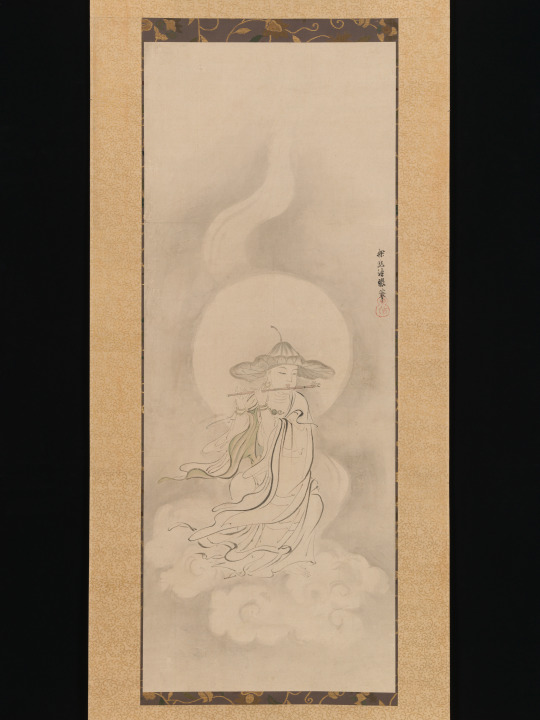
Jizō Bosatsu Playing a Flute. mid- 17th century. Credit line: Mary Griggs Burke Collection, Gift of the Mary and Jackson Burke Foundation, 2015 https://www.metmuseum.org/art/collection/search/53010
#aesthetic#art#abstract art#art museum#art history#The Metropolitan Museum of Art#museum#museum photography#museum aesthetic#dark academia
3 notes
·
View notes
Photo
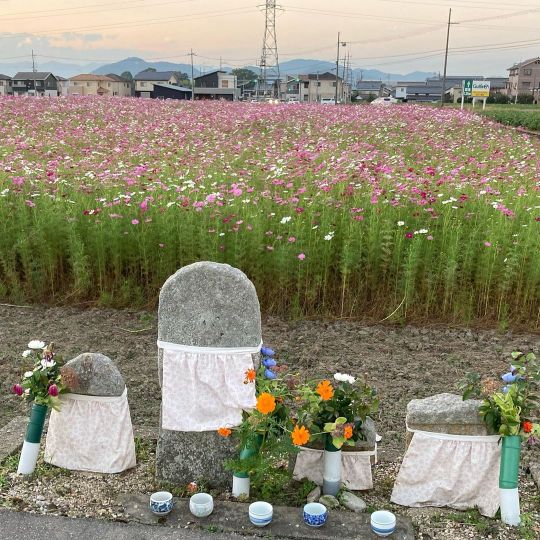
10月7日の #コスモス畑 。 #地蔵菩薩 #お地蔵さん Cosmos field on October. #Kṣitigarbha クシティガルバ 一般的に、愛情を込めて「おじぞうさん」または「おじぞう様」と呼ばれています。 Generally, it is affectionately called 'Ojizo-san' or 'Ojizo-sama.' #Jizo Bosatsu Kṣitigarbha (Sanskrit: क्षितिगर्भ, Chinese: 地藏; pinyin: Dìzàng; Japanese: 地蔵; rōmaji: Jizō; Korean: #지장(地藏); romaja: Jijang; Vietnamese: Địa Tạng, #ĐịaTạng #イマソラ #花のある暮らし #夕焼け #sunset #thelove_of_sunsets #コスモス #cosmos #大波斯菊 #花 #flower #fleur #Blume #fiore #bloem #цветок #blomma #blomst #kukka #çiçek #꽃 #flor #ดอกไม้ #hoa Date and time taken (Japan time)10/7/2021 6:02 PM. (野田 コスモス畑) https://www.instagram.com/p/CU0-yQxPl45/?utm_medium=tumblr
#コスモス畑#地蔵菩薩#お地蔵さん#kṣitigarbha#jizo#지장#địatạng#イマソラ#花のある暮らし#夕焼け#sunset#thelove_of_sunsets#コスモス#cosmos#大波斯菊#花#flower#fleur#blume#fiore#bloem#цветок#blomma#blomst#kukka#çiçek#꽃#flor#ดอกไม้#hoa
2 notes
·
View notes
